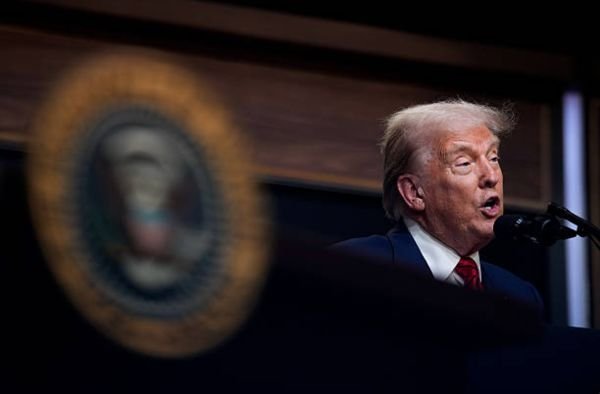Six months have passed since President Donald Trump signed a controversial executive order in February 2025 that bans transgender women from participating in women’s sports at all educational levels. Despite the strong regulatory stance, transgender athletes remain determined to find ways to compete, while ongoing legal battles and public debates around their fair participation continue to unfold.

Background: The Executive Order and Its Impact
Titled “Keeping Men Out of Women’s Sports,” the order directs the Department of Education to rescind federal funding from schools and institutions that allow transgender women and girls to compete in female sports categories. It relies on a strict biological interpretation of sex under Title IX and mandates compliance with this new standard, effectively excluding transgender women from female athletic opportunities.
The NCAA swiftly changed its policy to limit women’s sports competition to athletes assigned female at birth, banning transgender women from competing in women’s events.
Colleges, high schools, and universities face potential loss of federal funding if they do not comply.
The order also tasks the Education Secretary with enforcing Title IX in alignment with these provisions, heightening oversight on educational athletics.
While proponents argue this restores fairness and competitive equity for cisgender women, opponents—including LGBTQ+ advocates and human rights groups—condemn the order as discriminatory and harmful to transgender youth and athletes.
Six Months Later: The Ongoing Battles and Challenges
Despite the legal and policy restrictions, many transgender athletes strive to continue their sports careers. However, the landscape remains complex:
Legal Challenges: Several lawsuits have been filed challenging the executive order’s constitutionality, arguing it violates equal protection and civil rights laws.
State vs. Federal Conflicts: Some states maintain protections and inclusive policies for transgender athletes, leading to patchwork regulations and confusion among schools and sports organizations.
Athlete Experiences: Transgender women report feeling sidelined, facing exclusion, and struggling to find teams where they can compete fairly and safely.
Sports Organizations’ Responses: Apart from the NCAA, various governing bodies have adopted or are considering policies restricting transgender participation in women’s sports, particularly barring those who have undergone male puberty.
Key Ongoing Issues
- Balancing fairness in competition with inclusion and human rights protections.
- Reconciling conflicting state laws with the federal executive order.
- Addressing the mental health and well-being of transgender youth excluded from sports opportunities.
- Defining consistent policies for elite competitions, including Olympic-level events hosted in the U.S.
Voices from the Field: Perspectives on the Debate
Advocates for the executive order emphasize fairness for cisgender female athletes, citing concerns about physical advantages and safety:
- They argue the order protects Title IX provisions ensuring women’s equal athletic opportunities.
- Some female athletes and parents express support, fearing that inclusive policies undermine competitive balance.
Conversely, transgender athlete advocates highlight:
- The importance of inclusion, acceptance, and access to sports for the physical and mental well-being of transgender youth and adults.
- Studies showing that policies excluding transgender women often lack scientific consensus and disproportionately harm marginalized communities.
- The need for nuanced approaches, such as hormone level criteria, rather than outright bans.
What Lies Ahead: Monitoring the Impact and Moving Forward
The transgender athlete debate is far from settled:
- Legal outcomes in ongoing court cases could reshape enforcement of the executive order.
- Sports leagues, educational institutions, and policymakers continue wrestling with creating fair and inclusive frameworks.
- Public opinion remains divided, with advocacy and opposition both vocal and active.
The upcoming international competitions, including Olympic events on U.S. soil, may further influence policy discussions and enforcement.
FAQs: Understanding the Transgender Athlete Debate and Executive Order
1. What does the executive order ban?
It prohibits transgender women and girls from competing in women’s sports in schools and colleges receiving federal funds.
2. How has the NCAA responded?
The NCAA changed its policy immediately after the order, limiting women’s sports participation to athletes assigned female at birth and barring transgender women from competing.
3. Are there legal challenges to the order?
Yes, multiple lawsuits argue the order violates civil rights and equal protection laws.
4. Do all states follow this order?
No, some states have laws protecting transgender athletes’ participation, creating a patchwork regulatory environment.
5. What are the main arguments for and against the ban?
Supporters cite fairness and Title IX compliance; opponents emphasize inclusion, human rights, and the harms of exclusionary policies.
Conclusion
Six months after President Trump’s executive order reshaped the playing field for transgender athletes, the debate remains a contentious and evolving issue. Transgender women continue to fight for access and equality in sports while legal, social, and institutional battles rage on. Finding a balanced, respectful solution that honors both fairness and inclusion is crucial for the future of women’s athletics and the rights of transgender individuals in sports.

